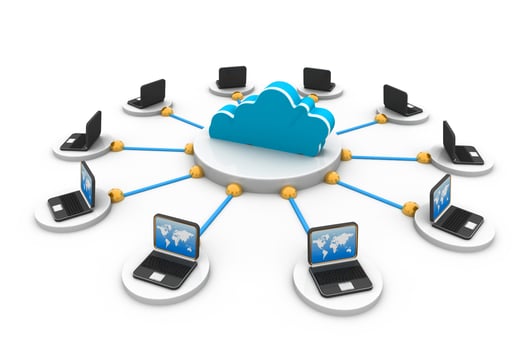
With each passing year, mobile- and cloud-based services are further supplanting the customer-premise equipment (CPE) standard.
This leads to two major challenges for network engineers.
The first is infrastructure. More and more people are using the cloud, but more than that, people are using more and more devices to access the cloud—usually without a wired connection. More and more mobile devices will require more and more infrastructure to support, monitor, and maintain.
The second challenge is information security. By end of the year, planet earth will exceed a new record for the amount of data which has been transmitted across it. Some of that data will be yours, and much of it will be valuable. When your first priority is increasing your users’ access to vast volumes of data, how will you task your second priority, which is keeping that data out of the hands of others?
Like they used to say, “knowing is half the battle.” Simply knowing what you’re in for is going to go a long way towards helping you prepare for what’s coming. So, with that said, here are our best guesses for the ongoing evolution of the cloud.
Key Trends in Infrastructure
According to a research document from Cisco, entitled “The Zettabyte Era” a number of key trends will emerge by 2020 and directly impact network engineers
- By 2020, PCs will account for just 29% of network traffic. The rest will come from mobile devices. For network engineers, this means completely redesigning their WLAN architecture in order to support this proliferation. Having a robust network, one that allows people to access the cloud via mobile devices, is crucial for attracting younger employees who use these services extensively.
- IP Video traffic will triple. Your enterprise may not yet have a digital videoconferencing solution yet. Odds are, it’ll want one—cloud services are a massive driver of efficiency, and video conferencing is understood to lead to much more productive meetings. This means that you’ll have to understand how to support and secure this technology, plus make accommodations for the higher bandwidth.
- Prepare for information security to change again. The proliferation of mobile and IoT devices had led to a concomitant increase in attack surfaces. As the number of connected devices continues to rise, and the nature of connectivity continues to change, administrators will have to overcome a number of new challenges in order to secure the enterprise.
What the Cloud Transition Means for Security
The implications of the cloud transition are especially pertinent for the information security industry: according to researchers at IHS, 54% of security services are delivered through CPE, with the remaining 46% coming through the cloud. By 2020, the firm predicts that those two numbers will flip in favor of cloud delivery.

Over that period, Allied Market Research anticipates that the global market for cloud security will reach $8.9 billion in revenue. However, experts anticipate that the continued advance of the cloud era will pose significant challenges on the security front.
Looking ahead to 2020, Gartner's position is that “95% of cloud security failures will be the customer's fault.” The expanded agency of the customer in cloud spaces, then, is very much a double-edged sword. This makes for a strange frontier, in that firms will need to account for end-user vulnerabilities that, in any previous era, would not have been considered to be the service vendor's problem.
It all serves to prove, then, that companies looking to push the cloud envelope must have all their bases covered. Either they need to build in a strong SOC, or partner with a company that can provide them with robust security tools. As an example of the latter, let’s take a look at a Garland technology partner, Imperva.
Imperva is an industry leader in the era of cloud security. Imperva's services cut out threats—including those originating from inside the network—and protect proprietary data by plugging up the security gaps that are inevitably created when businesses shift their pre-existing services from on-premises to the cloud. When it's time to perform maintenance or upgrade hardware, Garland's bypass network TAPs can switch an Imperva system on- or off-line in real time.
If you want to learn more about how to improve your network design for better cloud security, download our free white paper, Optimizing Network Design in Security Projects.

